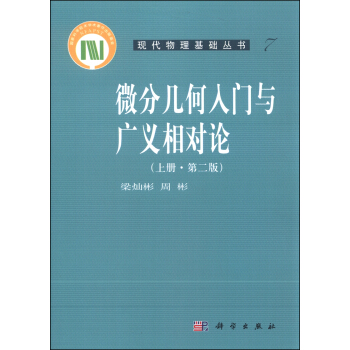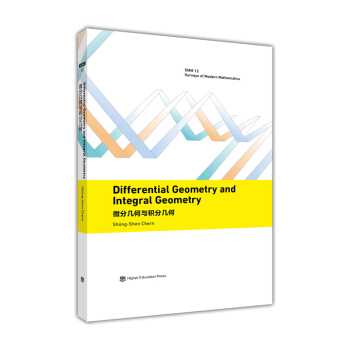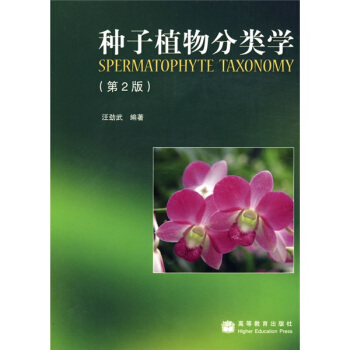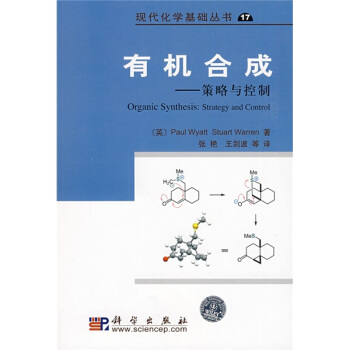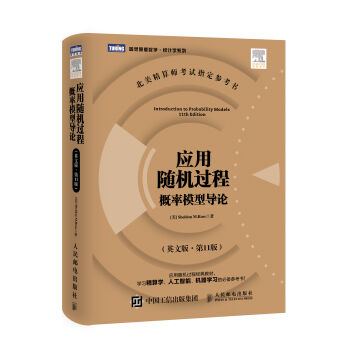

具体描述
编辑推荐
《应用随机过程 概率模型导论》是国际知名统计学家Sheldon M. Ross所著的关于基础概率理论和随机过程的经典教材,被加州大学伯克利分校、哥伦比亚大学、普度大学、密歇根大学、俄勒冈州立大学、华盛顿大学等众多国外知名大学所采用。与其他随机过程教材相比,本书非常强调实践性,内含极其丰富的例子和习题,涵盖了众多学科的各种应用。作者富于启发而又不失严密性的叙述方式,有助于使读者建立概率思维方式,培养对概率理论、随机过程的直观感觉。对那些需要将概率理论应用于精算学、计算机科学、管理学和社会科学的读者而言,本书是一本极好的教材或参考书。
第11版新增大量例子和习题,还对连续时间的马尔可夫链、漂移布朗运动等内容做了修订,更加注重强化读者的概率直观。
内容简介
《应用随机过程 概率模型导论(英文版 第11版)》是一部经典的随机过程著作,叙述深入浅出、涉及面广。主要内容有随机变量、条件期望、马尔可夫链、指数分布、泊松过程、平稳过程、更新理论及排队论等,也包括了随机过程在物理、生物、运筹、网络、遗传、经济、保险、金融及可靠性中的应用。特别是有关随机模拟的内容,给随机系统运行的模拟计算提供了有力的工具。最新版还增加了不带左跳的随机徘徊和生灭排队模型等内容。本书约有700道习题,其中带星号的习题还提供了解答。
《应用随机过程 概率模型导论(英文版 第11版)》可作为概率论与数理统计、计算机科学、保险学、物理学、社会科学、生命科学、管理科学与工程学等专业随机过程基础课教材。
作者简介
Sheldon M. Ross,国际知名概率与统计学家,南加州大学工业工程与运筹系系主任。1968年博士毕业于斯坦福大学统计系,曾在加州大学伯克利分校任教多年。研究领域包括:随机模型、仿真模拟、统计分析、金融数学等。Ross教授著述颇丰,他的多种畅销数学和统计教材均产生了世界性的影响,如《概率论基础教程(第8版)》等。
内页插图
精彩书评
★本书的一大特色是实例丰富,内容涉及多个学科,尤其是精算学……相信任何有上进心的读者都会对此爱不释手。”——JeanLeMaire,宾夕法尼亚大学沃顿商学院
★“书中的例子和习题非常出色,作者不仅提供了非常基本的例子,以阐述基础概念和公式,还从尽可能多的学科中提炼出许多较高级的实例,极具参考价值。”
——MattCarlton,加州州立理工大学(CalPoly)
目录
1IntroductiontoProbabilityTheory1.1Introduction
1.2SampleSpaceandEvents
1.3ProbabilitiesDefinedonEvents
1.4ConditionalProbabilities
1.5IndependentEvents
1.6Bayes'Formula
Exercises
References
2RandomVariables
2.1RandomVariables
2.2DiscreteRandomVariables
2.2.1TheBernoulliRandomVariable
2.2.2TheBinomialRandomVariable
2.2.3TheGeometricRandomVariable
2.2.4ThePoissonRandomVariable
2.3ContinuousRandomVariables
2.3.1TheUniformRandomVariable
2.3.2ExponentialRandomVariables
2.3.3GammaRandomVariables
2.3.4NormalRandomVariables
2.4ExpectationofaRandomVariable
2.4.1TheDiscreteCase
2.4.2TheContinuousCase
2.4.3ExpectationofaFunctionofaRandomVariable
2.5JointlyDistributedRandomVariables
2.5.1JointDistributionFunctions
2.5.2IndependentRandomVariables
2.5.3CovarianceandVarianceofSumsofRandomVariables
2.5.4JointProbabilityDistributionofFunctionsofRandomVariables
2.6MomentGeneratingFunctions
2.6.1TheJointDistributionoftheSampleMeanandSampleVariancefromaNormalPopulation
2.7TheDistributionoftheNumberofEventsthatOccur
2.8LimitTheorems
2.9StochasticProcesses
Exercises
References
3ConditionalProbabilityandConditionalExpectation
3.1Introduction
3.2TheDiscreteCase
3.3TheContinuousCase
3.4ComputingExpectationsbyConditioning
3.4.1ComputingVariancesbyConditioning
3.5ComputingProbabilitiesbyConditioning
3.6SomeApplications
3.6.1AListModel
3.6.2ARandomGraph
3.6.3UniformPriors,Polya'sUrnModel,andBose-EinsteinStatistics
3.6.4MeanTimeforPatterns
3.6.5Thek-RecordValuesofDiscreteRandomVariables
3.6.6LeftSkipFreeRandomWalks
3.7AnIdentityforCompoundRandomVariables
3.7.1PoissonCompoundingDistribution
3.7.2BinomialCompoundingDistribution
3.7.3ACompoundingDistributionRelatedtotheNegativeBinomial
Exercises
4MarkovChains
4.1Introduction
4.2Chapman-KolmogorovEquations
4.3ClassificationofStates
4.4Long-RunProportionsandLimitingProbabilities
4.4.1LimitingProbabilities
4.5SomeApplications
4.5.1TheGambler'sRuinProblem
4.5.2AModelforAlgorithmicEfficiency
4.5.3UsingaRandomWalktoAnalyzeaProbabilisticAlgorithmfortheSatisfiabilityProblem
4.6MeanTimeSpentinTransientStates
4.7BranchingProcesses
4.8TimeReversibleMarkovChains
4.9MarkovChainMonteCarloMethods
4.10MarkovDecisionProcesses
4.11HiddenMarkovChains
4.11.1PredictingtheStates
Exercises
References
5TheExponentialDistributionandthePoissonProcess
5.1Introduction
5.2TheExponentialDistribution
5.2.1Definition
5.2.2PropertiesoftheExponentialDistribution
5.2.3FurtherPropertiesoftheExponentialDistribution
5.2.4ConvolutionsofExponentialRandomVariables
5.3ThePoissonProcess
5.3.1CountingProcesses
5.3.2DefinitionofthePoissonProcess
5.3.3InterarrivalandWaitingTimeDistributions
5.3.4FurtherPropertiesofPoissonProcesses
5.3.5ConditionalDistributionoftheArrivalTimes
5.3.6EstimatingSoftwareReliability
5.4GeneralizationsofthePoissonProcess
5.4.1NonhomogeneousPoissonProcess
5.4.2CompoundPoissonProcess
5.4.3ConditionalorMixedPoissonProcesses
5.5RandomIntensityFunctionsandHawkesProcesses
Exercises
References
6Continuous-TimeMarkovChains
6.1Introduction
6.2Continuous-TimeMarkovChains
6.3BirthandDeathProcesses
6.4TheTransitionProbabilityFunctionPij(t)
6.5LimitingProbabilities
6.6TimeReversibility
6.7TheReversedChain
6.8Uniformization
6.9ComputingtheTransitionProbabilities
Exercises
References
7RenewalTheoryandItsApplications
7.1Introduction
7.2DistributionofN(t)
7.3LimitTheoremsandTheirApplications
7.4RenewalRewardProcesses
7.5RegenerativeProcesses
7.5.1AlternatingRenewalProcesses
7.6Semi-MarkovProcesses
7.7TheInspectionParadox
7.8ComputingtheRenewalFunction
7.9ApplicationstoPatterns
7.9.1PatternsofDiscreteRandomVariables
7.9.2TheExpectedTimetoaMaximalRunofDistinctValues
7.9.3IncreasingRunsofContinuousRandomVariables
7.10TheInsuranceRuinProblem
Exercises
References
8QueueingTheory
8.1Introduction
8.2Preliminaries
8.2.1CostEquations
8.2.2Steady-StateProbabilities
8.3ExponentialModels
8.3.1ASingle-ServerExponentialQueueingSystem
8.3.2ASingle-ServerExponentialQueueingSystemHavingFiniteCapacity
8.3.3BirthandDeathQueueingModels
8.3.4AShoeShineShop
8.3.5AQueueingSystemwithBulkService
8.4NetworkofQueues
8.4.1OpenSystems
8.4.2ClosedSystems
8.5TheSystemM/G/
8.5.1Preliminaries:WorkandAnotherCostIdentity
8.5.2ApplicationofWorktoM/G/
8.5.3BusyPeriods
8.6VariationsontheM/G/
8.6.1TheM/G/1withRandom-SizedBatchArrivals
8.6.2PriorityQueues
8.6.3AnM/G/1OptimizationExample
8.6.4TheM/G/1QueuewithServerBreakdown
8.7TheModelG/M/
8.7.1TheG/M/1BusyandIdlePeriods
8.8AFiniteSourceModel
8.9MultiserverQueues
8.9.1Erlang'sLossSystem
8.9.2TheM/M/kQueue
8.9.3TheG/M/kQueue
8.9.4TheM/G/kQueue
Exercises
References
9ReliabilityTheory
9.1Introduction
9.2StructureFunctions
9.2.MinimalPathandMinimalCutSets
9.3ReliabilityofSystemsofIndependentComponents
9.4BoundsontheReliabilityFunction
9.4.1MethodofInclusionandExclusion
9.4.2SecondMethodforObtainingBoundsonr(p)
9.5SystemLifeasaFunctionofComponentLives
9.6ExpectedSystemLifetime
9.6.1AnUpperBoundontheExpectedLifeofaParallelSystem
9.7SystemswithRepair
9.7.1ASeriesModelwithSuspendedAnimation
Exercises
References
10BrownianMotionandStationaryProcesses
10.1BrownianMotion
10.2HittingTimes,MaximumVariable,andtheGambler'sRuinProblem
10.3VariationsonBrownianMotion
10.3.1BrownianMotionwithDrift
10.3.2GeometricBrownianMotion
10.4PricingStockOptions
10.4.1AnExampleinOptionsPricing
10.4.2TheArbitrageTheorem
10.4.3TheBlack-ScholesOptionPricingFormula
10.5TheMaximumofBrownianMotionwithDrift
10.6WhiteNoise
10.7GaussianProcesses
10.8StationaryandWeaklyStationaryProcesses
10.9HarmonicAnalysisofWeaklyStationaryProcesses
Exercises
References
11Simulation
11.1Introduction
11.2GeneralTechniquesforSimulatingContinuousRandomVariables
11.2.1TheInverseTransformationMethod
11.2.2TheRejectionMethod
11.2.TheHazardRateMethod
11.3SpecialTechniquesforSimulatingContinuousRandomVariables
11.3.1TheNormalDistribution
11.3.2TheGammaDistribution
11.3.3TheChi-SquaredDistribution
11.3.4TheBeta(n,m)Distribution
11.3.5TheExponentialDistribution-TheVonNeumannAlgorithm
11.4SimulatingfromDiscreteDistributions
11.4.1TheAliasMethod
11.5StochasticProcesses
11.5.1SimulatingaNonhomogeneousPoissonProcess
11.5.2SimulatingaTwo-DimensionalPoissonProcess
11.6VarianceReductionTechniques
11.6.1UseofAntitheticVariables
11.6.2VarianceReductionbyConditioning
11.6.3ControlVariates
11.6.4ImportanceSampling
11.7DeterminingtheNumberofRuns
11.8GeneratingfromtheStationaryDistributionofaMarkovChain
11.8.1CouplingfromthePast
11.8.2AnotherApproach
Exercises
References
Appendix:SolutionstoStarredExercises
Index
前言/序言
用户评价
我不得不说,对于《应用随机过程:概率模型导论》(英文版,第11版)这本书,我从一个完全初学者的角度体验到了一种前所未有的学习乐趣。起初,我对于“随机过程”这个概念感到有些畏惧,总觉得它离我的生活很遥远,充满了复杂的数学公式。然而,这本书的语言风格极其友好,作者循序渐进地引导我进入这个领域。他没有一开始就抛出大量高深的定义,而是从一些非常生活化的例子入手,比如抛硬币的序列、下雨的概率等,让我逐渐认识到随机性在我们日常生活中无处不在。随着阅读的深入,作者 introduc 了各种各样的概率模型,比如泊松过程、马尔可夫链等等,并且在讲解时,总是会用非常形象的比喻来辅助理解。我印象深刻的是,在介绍泊松过程时,作者用了“顾客到达商店”的例子,将每分钟到达顾客的数量与泊松分布联系起来,让我一下子就明白了泊松过程的含义。这本书的结构也非常清晰,每一章都围绕一个核心主题展开,并且知识点之间的过渡自然流畅,不会让人感到突兀。我最喜欢的部分是,作者在讲解完一个模型后,总会给出一系列“思考题”,这些问题不是要求计算,而是鼓励你去思考模型的局限性以及可以拓展的方向,这培养了我独立思考和解决问题的能力。
评分作为一名在工程领域工作的资深工程师,我对于《应用随机过程:概率模型导论》(英文版,第11版)这本书的实用性感到由衷的钦佩。在实际工作中,我们经常会遇到各种不确定性问题,比如设备故障的预测、交通流量的模拟、信号的干扰等等,这些都属于随机过程的范畴。这本书恰恰为我们提供了解决这些问题的强大工具和理论基础。作者在书中详细介绍了各种适用于工程领域的概率模型,并提供了大量的算法和仿真方法。我特别赞赏的是,书中对于如何将这些模型应用于实际问题的分析和决策,给出了非常具体的指导。例如,在介绍排队论模型时,作者不仅讲解了M/M/1模型,还深入讨论了带有多个服务台、有限缓冲队列等更复杂的场景,并给出了计算系统性能指标(如平均等待时间、队列长度)的详细步骤。这对于我们优化资源配置、提高系统效率至关重要。此外,书中对于一些高级主题,如隐马尔可夫模型(HMM)和粒子滤波(Particle Filter)的介绍,也让我受益匪浅,这些技术在模式识别、目标跟踪等领域有着广泛的应用。这本书不愧是“应用”随机过程的导论,它真正做到了将理论与实践紧密联系,是工程师们案头必备的参考书。
评分作为一名对理论数学充满热情的学生,我在阅读《应用随机过程:概率模型导论》(英文版,第11版)这本书时,感受到了前所未有的学术探索的乐趣。作者在保持严谨的数学表述的同时,又为我们展现了一个充满活力的随机世界。我特别欣赏的是,这本书在概念的引入上,总是能够从最基本、最核心的定义出发,然后逐步深入到更复杂的定理和证明。例如,在讲解条件期望时,作者从概率的定义出发,一步步推导出期望的性质,并最终将其推广到随机变量的函数,让我对这个看似基础的概念有了全新的认识。书中对于一些关键的随机过程,如维纳过程、泊松过程、马尔可夫链等,都有非常详尽和深入的论述,不仅给出了它们的定义和性质,还探讨了它们之间的联系以及在不同数学分支中的应用。我尤其喜欢书中的一些“理论探索”部分,作者在这里会引导读者思考一些更深层次的问题,比如随机过程的收敛性、遍历性等,这极大地激发了我对随机过程理论的进一步研究兴趣。这本书的参考文献也做得非常扎实,为我提供了深入学习的宝贵资源,让我能够找到更多相关的研究文献。
评分这本《应用随机过程:概率模型导论》(英文版,第11版)真是让我惊喜连连,完全超出了我最初的期待。作为一名在统计学领域摸爬滚打了多年的研究生,我见过不少关于随机过程的教材,但这本书的独特之处在于它将理论的深度与实际应用的广度完美结合。作者在梳理经典理论框架的同时,并没有将数学推导过程堆砌得令人望而却步,而是巧妙地通过大量的真实世界案例来引出和阐释概念,让我能够更直观地理解那些抽象的数学公式背后的意义。无论是金融市场的风险建模,还是通信网络中的排队论问题,抑或是生物系统中物种的演化,书中都给出了细致入微的分析。我尤其欣赏的是,每一章节的结尾都附有精心设计的练习题,这些题目难度适中,既有巩固基础的概念性问题,也有需要一定思考和计算的应用性挑战,极大地帮助我巩固了所学知识。而且,书中的图表和可视化呈现也做得非常出色,清晰地展示了随机过程的动态变化,让那些原本枯燥的概率分布和马尔可夫链跃迁变得生动起来。总而言之,这本书是那种读完后你会觉得脑海中清晰了很多,对随机过程的理解也上升了一个台阶的教材。
评分我必须承认,在翻阅《应用随机过程:概率模型导论》(英文版,第11版)这本书之前,我对随机过程的理解仅停留在教科书上那些枯燥的公式和定理。但这本书的出现,彻底颠覆了我的认知。作者以一种极其精妙的方式,将抽象的数学概念与生动的现实世界联系起来。我尤其喜欢作者在引入新概念时所采用的“问题驱动”的学习方式。比如,在介绍布朗运动时,他并没有直接给出定义,而是先描绘了微粒在液体中不规则运动的景象,然后引出与之相关的随机微分方程,这才是我第一次真正感受到数学是如何精妙地描述自然现象的。书中涵盖的案例也非常广泛,从金融建模中的期权定价,到物理学中的粒子扩散,再到计算机科学中的算法分析,都给出了详实的论述。让我印象深刻的是,作者在讲解马尔可夫链时,不仅仅关注理论推导,还花了相当大的篇幅来讨论不同类型的马尔可夫链(离散时间、连续时间,齐次、非齐次)以及它们在不同领域的应用,并配以大量的图示,使得概念更加直观易懂。这本书的语言风格非常典雅,读起来有一种沉浸式的体验,仿佛置身于一个知识的殿堂。
评分不错不错不错不错不错不错不错不错不错不错不错不错不错不错不错不错不错不错
评分高阶段的概率书了
评分东西好,用着不错,以后还来买
评分还是不错的,很好用
评分好
评分应用随机过程 概率模型导论,内容丰富,挺好的。
评分此用户未填写评价内容
评分经典用书
评分快递小哥服务周到、热情,显示京东服务的高质量、高水平,大赞!
相关图书
本站所有内容均为互联网搜索引擎提供的公开搜索信息,本站不存储任何数据与内容,任何内容与数据均与本站无关,如有需要请联系相关搜索引擎包括但不限于百度,google,bing,sogou 等
© 2025 book.idnshop.cc All Rights Reserved. 静思书屋 版权所有

![黎曼曲面和热带曲线的模空间导引(英文版) [Introduction to Moduli Spaces of Riemann Surfaces and Tropical Curves] pdf epub mobi 电子书 下载](https://pic.tinynews.org/12065623/5948d943N626d02fe.jpg)

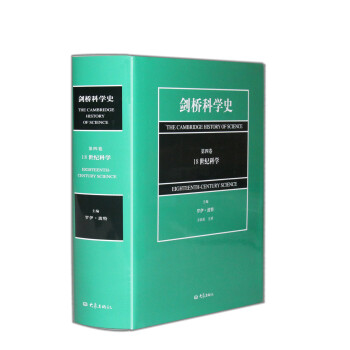
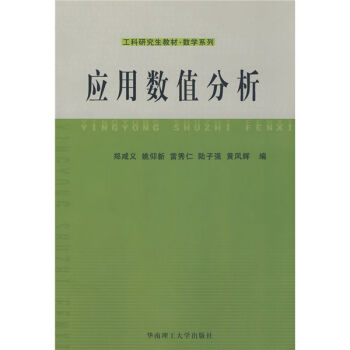
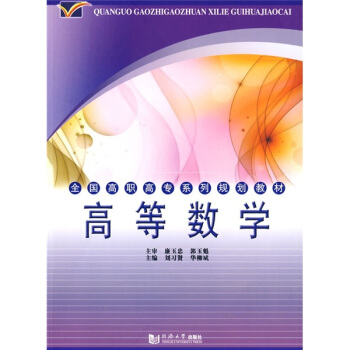
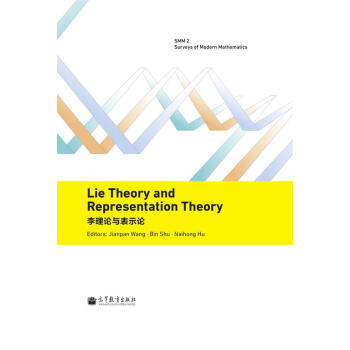
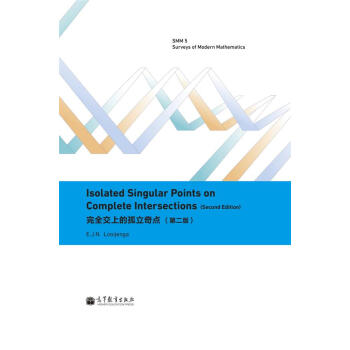

![有限群导引 (英文版) [Finite Groups: An Introduction] pdf epub mobi 电子书 下载](https://pic.tinynews.org/11901629/57230039N78cb63ae.jpg)
![脆性固体断裂力学(第2版) [Fracture of brittle solids] pdf epub mobi 电子书 下载](https://pic.tinynews.org/10126143/565524e8N4c9ade30.jpg)


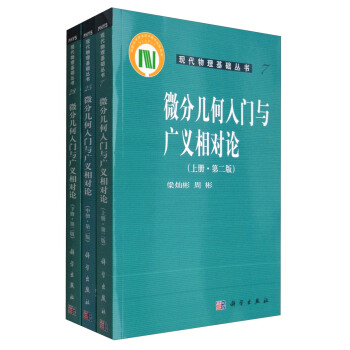
![国外化学经典教材系列(影印版):质谱(第2版) [Mass Spectrometry (2nd Edition)] pdf epub mobi 电子书 下载](https://pic.tinynews.org/10921191/5398fcc9N32449a0e.jpg)
